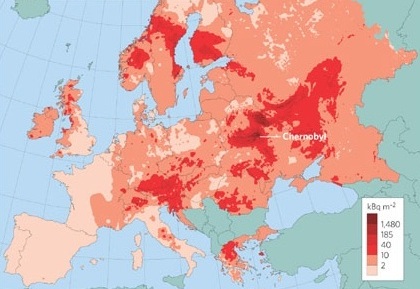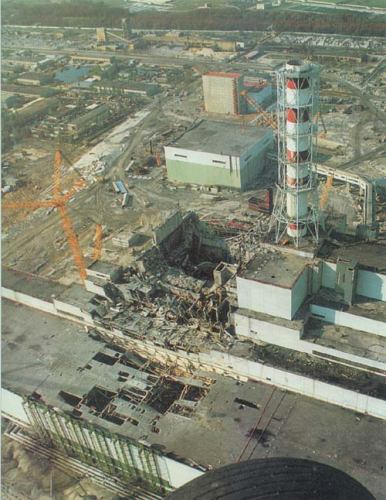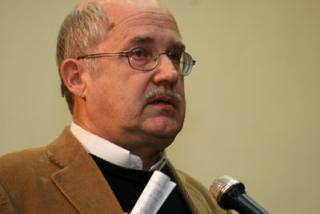
Radioactive fallout from Caesium-137 after Chernobyl.
The peace tour through Europe, organised by “Children of Chernobyl”, aims to focus the attention of the World Health Organization (WHO) and UN to help and support people in countries affected by the Chernobyl disaster, Rafto Foundation reports.
It also aims to provide them with reliable information about the disaster, the consequences, and the effects on children’s health in particular. A second generation of children are now being affected by the continuing radiation from Chernobyl.
Silence over Chernobyl
The nuclear accident took place on 26 April 1986, a time when the Soviet Union controlled the region. Soviet authorities decided not to cancel 1 May outdoor parades in the region, leading to more people being unnecessarily exposed.
Silence over Chernobyl and its consequences on health ruled during the Soviet period and also later during the presidential regime in Belarus. Scientists were arrested, institutes closed, physicians threatened and people were frightened.
Today one cannot still obtain any open public information about the nuclear and public health situation in most of the affected areas of Belarus. “The flow of information is limited on these issues” said Gennady Grushevoy in a telephone conversation with the Rafto Foundation earlier in April.
Gennady Grushevoy in a telephone conversation with the Rafto Foundation earlier in April.
Peace tour for civil rights
The peace tour consists of three stages. It started in Minsk, Belarus, in the “Garden of Hope” on 21 April. Twenty five participants from Belarus, most of them students, but also two journalists and a doctor, are participating in the tour. They are going by bus from Minsk to Geneva.
During the trip through Europe participants from Germany, Switzerland and Austria join the Belarusian group. The destination and meeting place of the initiative is Geneva, in front of the WHO building.
It is the civil rights movement that up to now has run international humanitarian programs, called for transparency, access to information and medical data regarding Chernobyl, and asked that the truth about the consequences of Chernobyl for life and health be shared openly.
Chernobyl does not remain in a museum, but remains a constant challenge today and tomorrow. During the meeting with representatives of the UN and WHO, participants on the peace tour aim to demand facts and information and the support of the world community with regard to the situation in Belarus.
Remembering and reminding
People around the world are invited to join the candle action by placing a candle in their window for the commemoration of the 25th anniversary of Chernobyl. As we remember those who continue to suffer from Chernobyl we will also be thinking about the people of Japan.
Long term follow up  Gennady Grushevoy (left) chairs the non-governmental organisation ”Children of Chernobyl” in Belarus which helps Belarusian children travel abroad to rest in a healthier environment and receive medical treatment.
Gennady Grushevoy (left) chairs the non-governmental organisation ”Children of Chernobyl” in Belarus which helps Belarusian children travel abroad to rest in a healthier environment and receive medical treatment.
Grushevoy also works with civil movement initiatives involving young people from different regions in Belarus and helps develop youth centres throughout the country, where young Belarusians meet to address social, political, cultural and ecological issues.
Grushevoy and his organisation have for many years arranged annual youth festivals and conferences in Minsk, the capital of Belarus, under the common name of the project “Look into the future”. Participants in the project are different regional youth centres, and Belarusian and foreign NGOs.
The Rafto foundation has been involved in this cooperation project since 2008 and continues to follow up the 1999 Rafto Prize laureate.
Related articles:
Rafto laureate gathers Belarusian youth


